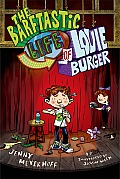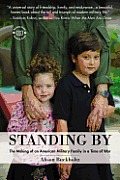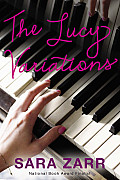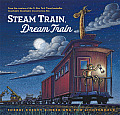Yesterday I reviewed The Barftastic Life of Louie Burger, a funny book that should resonate with anyone who’s ever been challenged to get up on a stage and perform. (Read the review and enter to win a copy here.)
Today, author Jenny Meyerhoff is stopping by as part of her blog tour. Meyerhoff is the author of a young adult novel, Queen of Secrets, and three books for young readers–Sami’s Sleepaway Summer, Third Grade Baby, and most recently, The Barftastic Life of Louie Burger, a story about an aspiring stand-up comic with an unusual catch phrase. Unlike Louie, Jenny is not a comedian, but she does know a lot about barf. After all, she’s a mom. Her three kids love fluffernutters, comedy and reading. Jenny lives in Riverwoods, Illinois with her funny kids and her delightful husband. For more information, visit her website: www.jennymeyerhoff.com.
The next stop on her tour is Geo Librarian .
From Jenny Meyerhoff:
Hello, Mother Daughter Book Club Readers. It’s so nice to be here today to chat with you as part of my blog tour. My latest book, The Barftastic Life of Louie Burger, just released, and as you might suspect from reading the title, it’s a humorous book.
Although I dreamt of writing children’s books, even when I was young enough to still be called a child, I never thought I would write funny books. I thought I would write fantasies. My first book, Third Grade Baby, actually started out as a story about the Tooth Fairy’s top secret tooth management computer system. It wasn’t very good, so I stripped away all the magical elements and I was left with the simple, realistic story of a young girl who still had all her baby teeth.
That’s when I learned a big lesson. Comedy and tragedy are two sides of the same story! Being teased about your baby teeth could be tragic, but it can also be amusing. It all depends on how you look at it.
Parts of Louie’s life might sound pretty depressing. Louie’s father just lost his job. Louie seems to be growing apart from his best friend. I could have written this book in a really heart-wrenching way. And sometimes, heart-wrenching is the best fit. But even in my own life, I like to see the humor in a situation. Like the time the local paper took a picture of me nine months pregnant and blew it up to cover the entire front page in their coverage of the opening of the local pool. My maternity swimsuit had tented out around me in the water and I looked more like 27 months pregnant. My only choices were move to a new town or laugh.
Laughing is cheaper, and it’s good for you too!
A lot of people think that funny books come from packing in the zingers and the one-liners, and while those help, true humor, for me, comes from situation. I think kids really get this. I try to put Louie in as many uncomfortable and incongruous situations as I can: the non-sporty kid trying to prove his athletic prowess; the older kid trying to hide the fact that he plays unicorns with his little sister; the comedian who’s afraid to tell a joke!
And of course, it never hurts to throw in a little slapstick.
I think situational and slapstick humor is one reason classic comedians still resonate. Louie Burger is a big fan! Here’s a link to his favorite Buster Keaton moment from the book! http://www.youtube.com/watch?v=FN2SKWSOdGM
Thanks for having me today. If you want to know more about me and Louie, visit me at www.jennymeyerhoff.com













